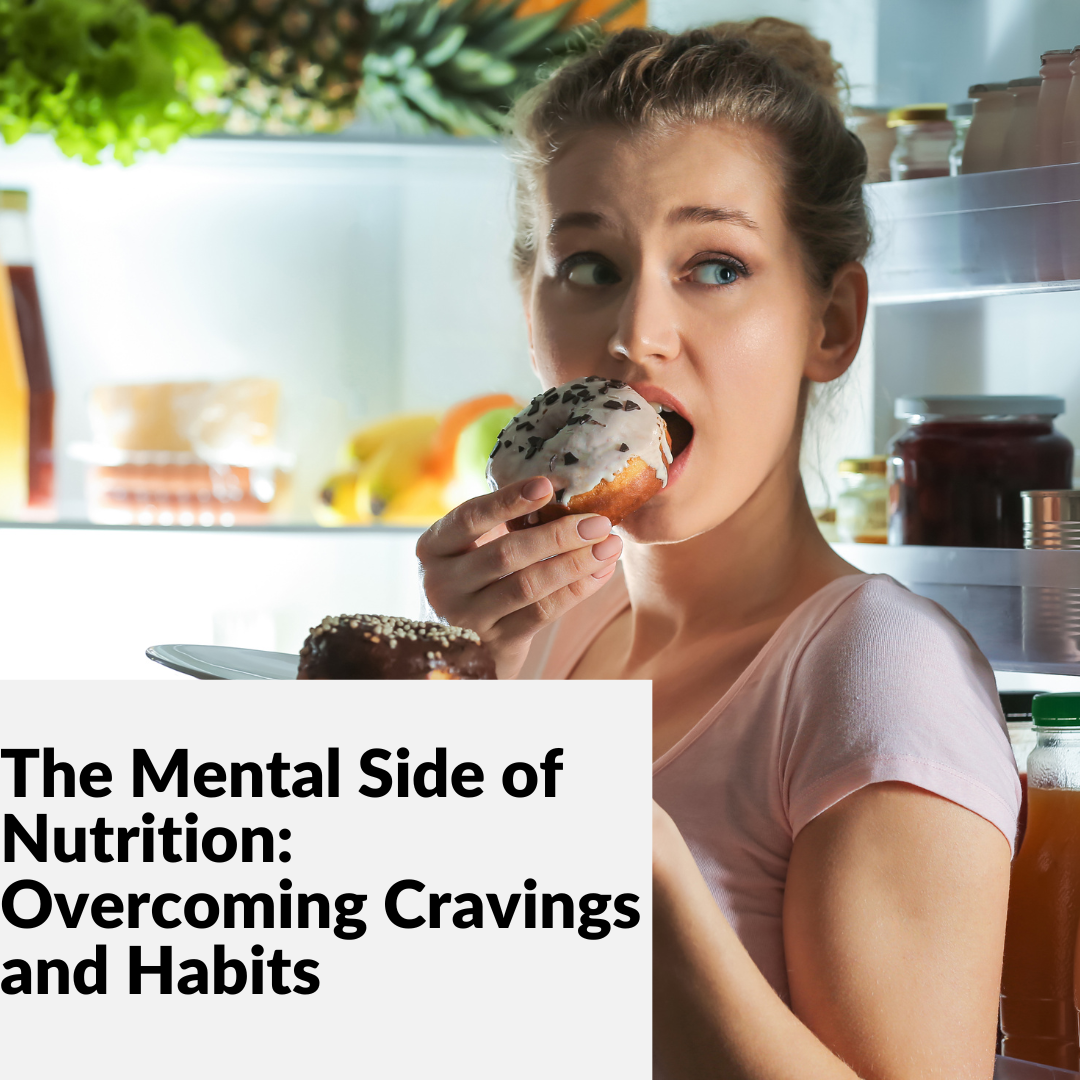
Let’s get real for a second—nutrition isn’t just about what’s on your plate. It’s also about what’s going on in your mind. We all know the basics: eat whole foods, balance your macros, stay hydrated. But what about those moments when you’re standing in front of the pantry at 9 PM, reaching for the cookies even though you’re not even hungry?
That’s the mental side of nutrition—the part that doesn’t get talked about nearly enough. So, let’s dig into why we eat the way we do, how cravings are more about your brain than your body, and how to shift habits so your actions line up with your goals.
Understanding the Psychology of Eating
Our eating habits are rooted in more than just hunger. In fact, most of our food choices are driven by:
-
Emotions: Stress, boredom, anxiety, loneliness—these can all trigger emotional eating.
-
Habits and routines: Grabbing a snack every time you watch Netflix or rewarding yourself with food after a long day becomes automatic.
-
Environment: What’s around you (hello, office donuts) influences what you eat more than you think.
-
Conditioning: Growing up hearing “clean your plate” or using food as a reward wires us to see food as more than fuel.
When you realize that cravings and overeating often have nothing to do with actual hunger, it becomes easier to make more empowered choices.
Cravings: What They Really Mean
Cravings are tricky. They can feel urgent and overpowering, but they’re usually messages from your brain—not your body.
-
Sugar cravings? You might be dealing with an energy crash or emotional stress.
-
Salty snacks? Could be tied to dehydration or even low sleep.
-
Constant hunger? Often a sign your meals aren’t balanced enough in protein, fiber, or healthy fats.
Before you give in to a craving, pause and ask yourself: “What am I really needing right now?”
Sometimes it’s rest. Sometimes it’s connection. Sometimes… yeah, it’s chocolate—and that’s okay too.
Strategies to Stay Consistent
Here’s where the mindset work comes in. You don’t need more willpower—you need better tools. Try these:
1. Identify Your Triggers
Start noticing what situations, emotions, or times of day lead to cravings or mindless eating. Journaling for even a few days can be a game changer.
2. Use the “HALT” Check-In
Before reaching for food, ask yourself if you’re:
-
Hungry
-
Angry
-
Lonely
-
Tired
Most of the time, it’s not hunger.
3. Create a Nutrition Environment
Make the healthy choice the easy choice. Keep your go-to meals prepped, your water bottle filled, and your snacks portioned out. Set your space up to support your goals.
4. Reframe the All-or-Nothing Mentality
You don’t “mess up” because you had a cupcake. One choice doesn’t define your whole day or week. Ditch the guilt and move on.
5. Build In Mindful Moments
Even just 60 seconds of deep breathing or stepping outside for a few breaths of fresh air can help reset your nervous system and reduce emotional eating triggers.
6. Practice Habit Stacking
Tie a new behaviour (like drinking a glass of water) to a habit you already have (like brushing your teeth). Small, consistent actions beat big, unsustainable changes every time.
Bottom Line: It’s a Mental Game, Too
Nourishing your body isn’t just a physical journey—it’s deeply mental and emotional. When you start paying attention to why you’re eating, not just what you’re eating, everything shifts.
So be kind to yourself. Recognize that cravings and habits are human. And know that every time you pause, reflect, and choose to align with your goals, you’re building serious mental muscle—and that’s what leads to long-term success.
Leave a Comment
You must be logged in to post a comment.
0 Comments